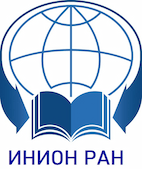№ 3, 2021
Orthodoxy and Liberalism in Russian Politics
Russia, in contrast to other modern Orthodox European count ries, has never experienced struggle for church autocephaly and the formation of political pluralism simultaneously, which naturally brought the church and liberals closer together. The distinguishing feature of the Russian liberalism is its late, or “catch up”, development. In the 19th century, libera lism no longer needed a religious approval; the appeal to the Holy Scriptures looked archaic. Another Russian distinguishing feature — divergence of secu lar and spiritual traditions — is also very important. After the emergence of the dualistic monarchy in Russia (1906—1917), religious topics were no lon ger a taboo, but Christian liberalism as an influential trend failed to develop. The attempts of combining liberal and Christian ideas in the pre-revolutiona ry Russian politics faced a number of problems. The results in practice were modest either due to the lack of the electoral demand, or due to the blocking of specific initiatives at the state and church levels. The promotion of liberal va lues contradicted Ortho dox tenets, and the target electoral group — the lower clergy — heavily depended on the episcopate. In the post-Soviet Russia, in contrast to the count ries in Central Europe, Christian politics, including its liberal version, did not revive. At the end of the day, all such projects have remained marginal. The episcopate focuses on cooperation with the authorities, and there is little support for liberal ideas among the faithful. The future might see a gradual strengthening of liberal tendencies within the church, but at the same time, the Russian version of Christian democracy remains extreme ly unlikely.
DOI: 10.30570/2078-5089-2021-102-3-99-124
Pages: 99-124
Рассылка
A. V.Makarkin
Main Page ~ Authors ~ A. V.Makarkin










